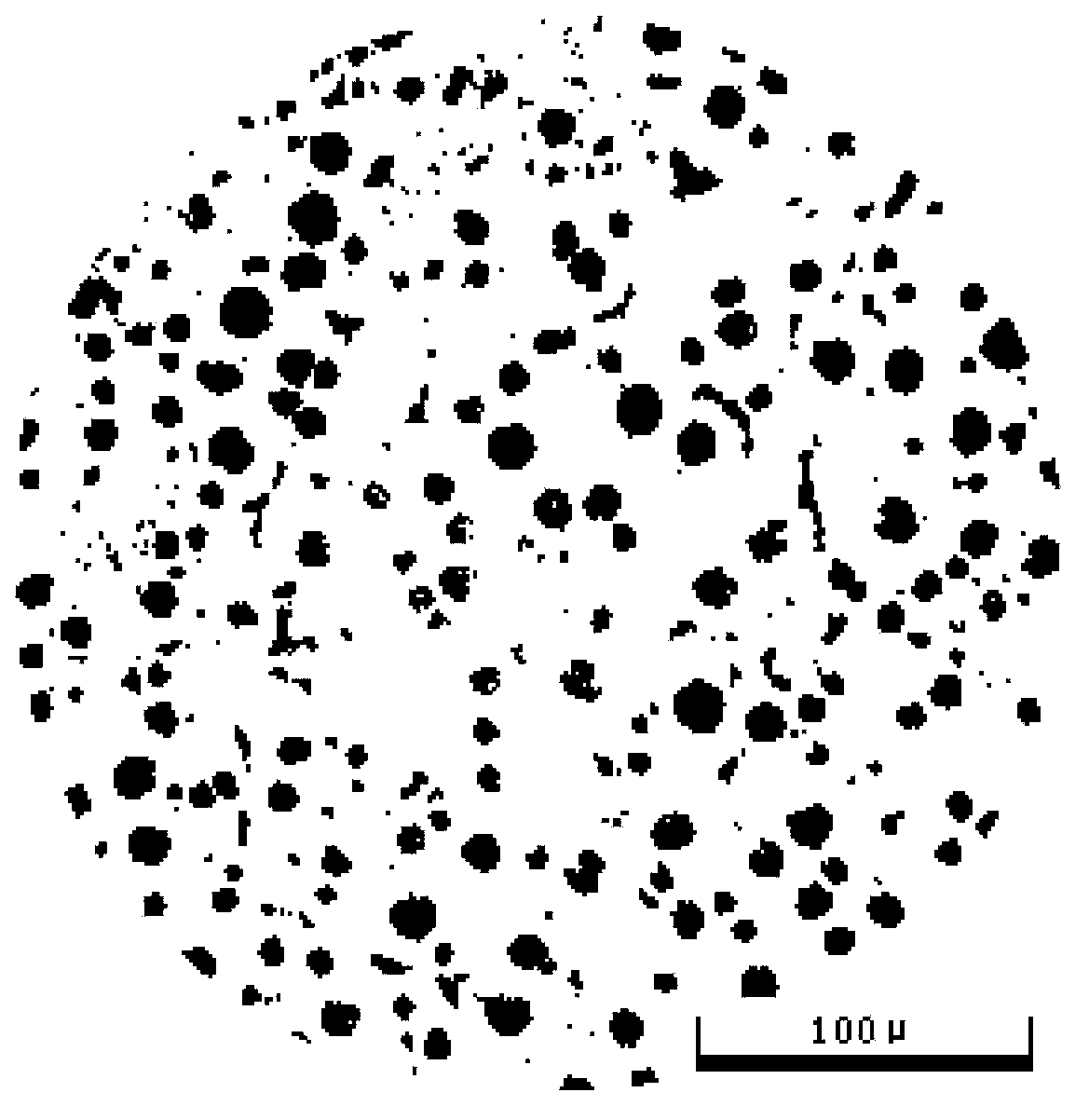Preparation method of high-temperature-resistant antioxidant exhaust manifold nodular cast iron
A technology for ductile iron and exhaust manifolds, which is applied in the field of preparation of ductile iron for exhaust manifolds, can solve the problems of poor thermal strength and low cycle times of failure, and achieve improved thermal strength, high-temperature mechanical properties, and prevention of The effect of penetrating
- Summary
- Abstract
- Description
- Claims
- Application Information
AI Technical Summary
Problems solved by technology
Method used
Image
Examples
specific Embodiment approach 1
[0013] Specific implementation mode 1: A kind of ductile cast iron for high temperature resistant and anti-oxidation exhaust manifold in this embodiment has mass fractions of 3.15% to 3.25%, 4.15% to 4.35%, 1.20% to 1.30%, 0.20% to 0.24%, 0.15% to 0.18%, 0.012% to 0.014%, 0.027% to 0.031%, 0.048% to 0.055% of C, Si, Mo, V, Mn, S, P, Mg and the rest of Fe composition; including mass The fraction is 0.019% to 0.024% of residual rare earth element Re.
specific Embodiment approach 2
[0014] Embodiment 2: A method for preparing ductile iron for high temperature and oxidation resistant exhaust manifolds of this embodiment is carried out in the following steps:
[0015] 1. Smelting molten iron: First, weigh Q12 pig iron and steel scrap according to the mass parts of Q12 pig iron and scrap steel as 70-75 and 25-30, and then calculate the ratio of the mass of ferromolybdenum alloy to the total mass of Q12 pig iron and scrap steel as ( 2~2.5): 100, according to the ratio of the mass of vanadium alloy to the total mass of Q12 pig iron and scrap steel (0.4~0.5): 100, according to the ratio of the mass of ferrosilicon alloy to the total mass of Q12 pig iron and scrap steel (2.0~ 2.3): 100, weigh ferromolybdenum alloy, vanadium alloy and ferrosilicon alloy, then add the weighed Q12 pig iron, scrap steel, ferromolybdenum alloy, vanadium alloy and ferrosilicon alloy into the intermediate frequency furnace, heat up to a temperature of 1500 ~ 1550 ℃, static Put it in pl...
specific Embodiment approach 3
[0018]Specific Embodiment 3: The difference between this embodiment and Specific Embodiment 2 is that in Step 1, the components in steel scrap and the mass fractions of each component are: C: 0.17%-0.21%, S: 0.012%-0.016%, P: 0.020% ~ 0.025%, Mn: 0.24% ~ 0.28%, Si: 0.30% ~ 0.40%, other steps and parameters are the same as those in Embodiment 1 or 2.
PUM
| Property | Measurement | Unit |
|---|---|---|
| particle size | aaaaa | aaaaa |
| elongation | aaaaa | aaaaa |
| elongation | aaaaa | aaaaa |
Abstract
Description
Claims
Application Information
 Login to View More
Login to View More - R&D
- Intellectual Property
- Life Sciences
- Materials
- Tech Scout
- Unparalleled Data Quality
- Higher Quality Content
- 60% Fewer Hallucinations
Browse by: Latest US Patents, China's latest patents, Technical Efficacy Thesaurus, Application Domain, Technology Topic, Popular Technical Reports.
© 2025 PatSnap. All rights reserved.Legal|Privacy policy|Modern Slavery Act Transparency Statement|Sitemap|About US| Contact US: help@patsnap.com



